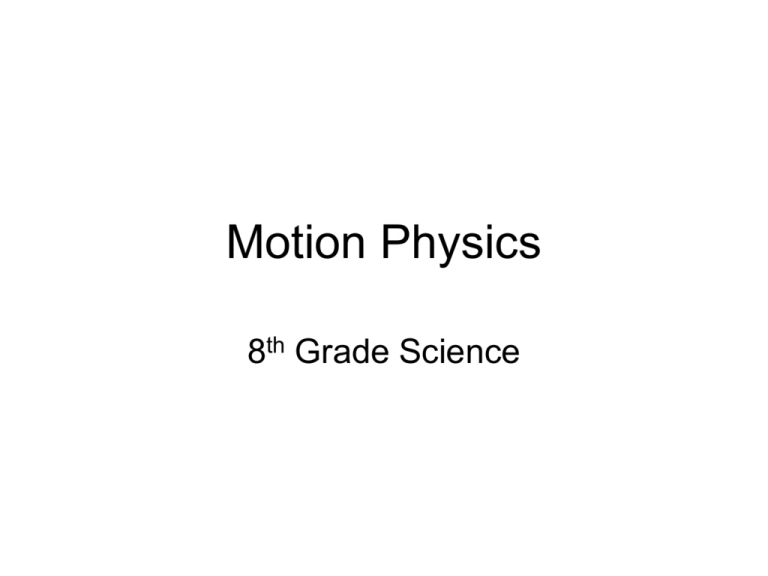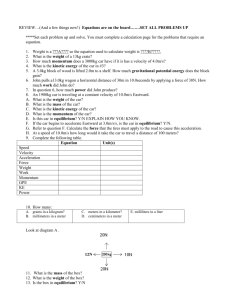Motion Physics
advertisement

Motion Physics 8th Grade Science Frame of Reference • An object is in motion when its distance from another object is changing. Whether an object is moving or not depends on your point of view. For example, a woman riding on a bus is not moving in relation to the seat she is sitting on, but she is moving in relation to the buildings the bus passes. A reference point is a place or object used for comparison to determine if something is in motion. An object is in motion if it changes position relative to a reference point. You assume that the reference point is stationary, or not moving. Frame of Reference Speed • If you know the distance an object travels in a certain amount of time, you can calculate the speed of the object. The speed of an object is the distance the object travels in one unit of time. To calculate the speed of an object, divide the distance the object travels by the amount of time it takes to travel that distance. Speed Average Speed • When an object travels at a constant speed, its speed at any moment during its motion is the same as it is at every other moment. Most objects do not move at constant speeds. To find the average speed of an object, divide the total distance traveled by the total time Instantaneous Speed • An object’s instantaneous speed is the rate it is moving at a given instant. An object’s speed tells how fast it is moving, but not the direction of the motion Velocity • When you know both the speed and direction of an object’s motion, you know the velocity of the • object. Speed in a given direction is called velocity. Acceleration • Acceleration is the rate of change in the velocity of an object. Velocity can change in three different ways. Speed up, slow down, or changing direction. All three of these changes are technically called acceleration. Acceleration • Final Velocity – original velocity Time Acceleration • The slowing down of an object can be referred to as deceleration and the changing of direction can be called circular motion. Momentum • Determines how difficult it is to start or stop an objects motion. • All moving objects have momentum. • Momentum depends on the mass of the object and the velocity with which it is traveling. Momentum • The formula for momentum is: • Mass x Velocity Conservation of Momentum • The total momentum of any group of objects remains the same unless outside forces act on the objects. • This means that momentum is conserved. If one object loses momentum, but another must gain what is lost. Conservation of Momentum • E.g. • Billiards- The momentum from the moving ball is transferred to the stationary balls. None of the momentum is lost. It is transferred from the cue ball to the rack.







